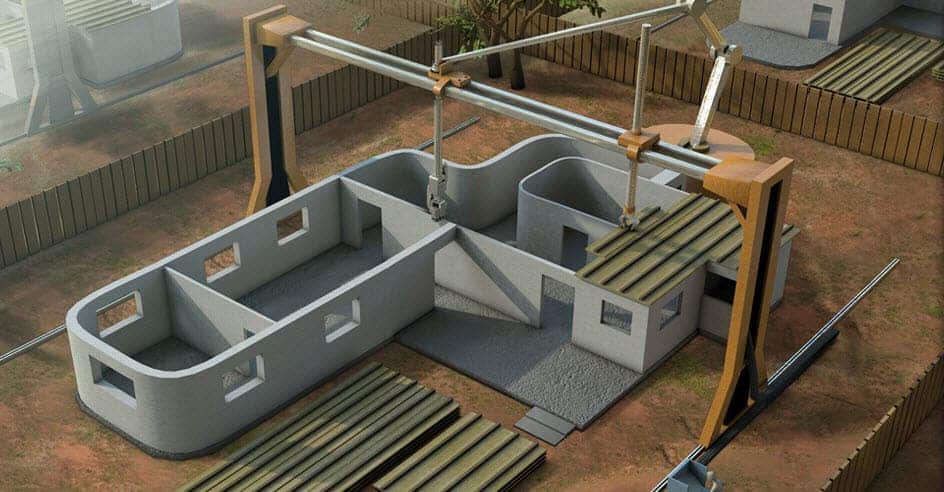
A computer model of the Contour Crafting Robotic Construction System. Basically, huge 3-D printers and tools would automatically build civil structures based on input CAD/CAM designs. Source: www.contourcrafting.org
We haven’t actually shied away from praising the marvels of 3D printing. We’ve told you all about printing fossils, medical implants, even skin, bones, bacteria or organs! Of course, these are some eccentric uses since, after all, 3-D printing was designed for manufacturing in mind. It’s easy imagine a not so distant future where most goods are 3-D printed, even by home users themselves, but Behrokh Khoshnevis, a professor of Industrial & Systems Engineering at the University of Southern California (USC), has something different in mind. He wants to 3-D print entire homes, as in actual houses.
Khoshnevis and colleagues are working on a prototype for a machine called ‘Contour Crafting’. They’ve already demonstrated that it’s possible to print an entire 2,500 sqft house in a whooping 20 hours. We’re not talking of course about a plastic house. Scientists have been using 3-D printers to actually print stem cells, for instance. Printing concrete layer by layer is damn easy using this system, and it’s all automated based on CAD designs.
“Contour Crafting is a fabrication process by which large-scale parts can be fabricated quickly in a layer-by-layer fashion. The chief advantages of the Contour Crafting process over existing technologies are the superior surface finish that is realized and the greatly enhanced speed of fabrication. The success of the technology stems from the automated use of age-old tools normally wielded by hand, combined with conventional robotics and an innovative approach to building three-dimensional objects that allows rapid fabrication times. Actual scale civil structures such as houses may be built by CC. Contour Crafting has been under development under support from the National Science Foundation and the Office of Naval Research.”
[ALSO READ] First fully printed 3-D house looks amazing
Sure, a Chinese engineering team might be able to pull this off even faster and maybe even cheaper, but the implications are pretty huge to me at least. It could revolutionize the way civil engineering is made just a decade from now and offers the starting point for the construction of structures on the moon and Mars, as well as fine arts on the creation of large ceramic sculptures.
To find out more, I invite you all to check out Khoshnevis’ TED talk, embedded right below.









